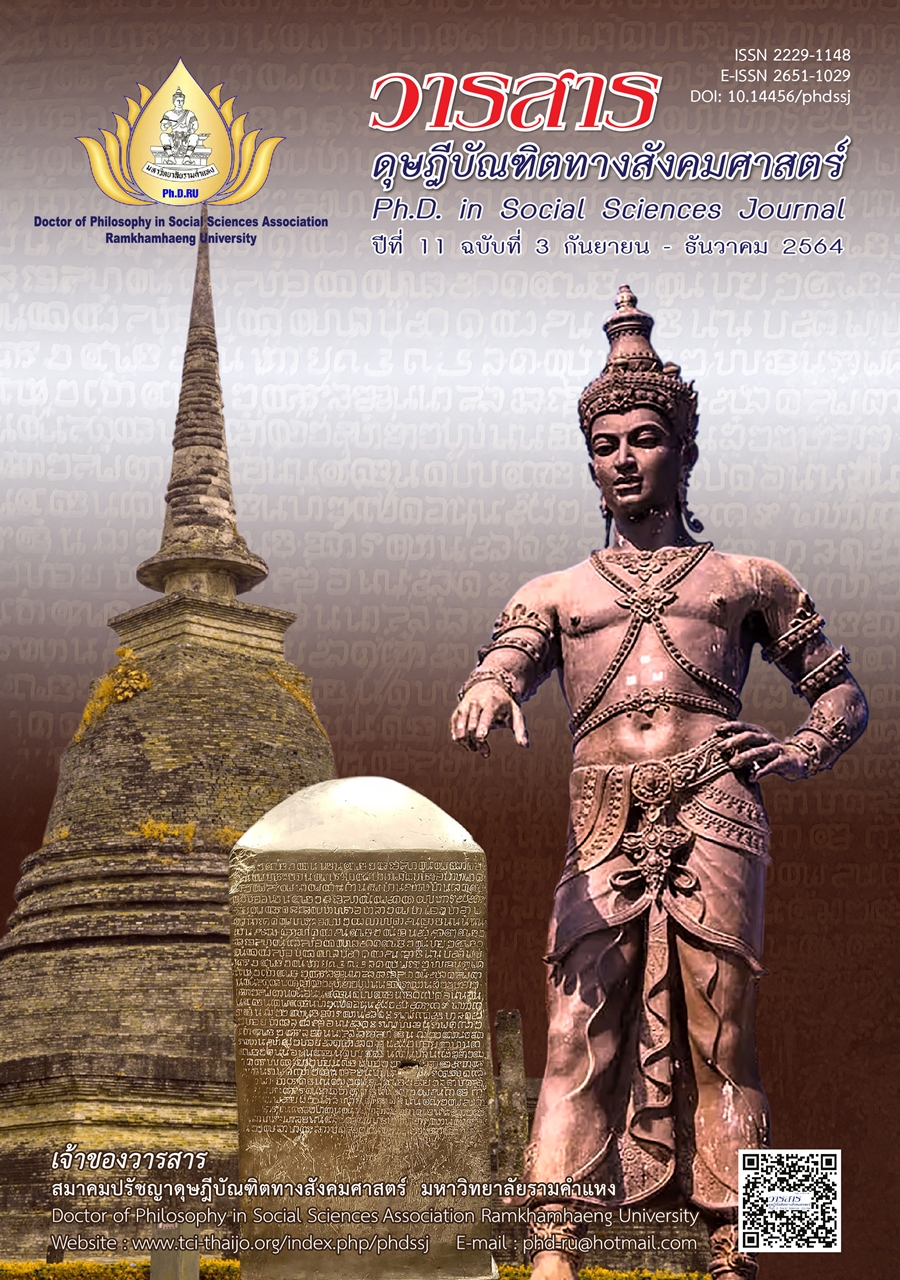The Development of Learning Information System to Improve Research Competence for Academic Staff at Rajabhat University
Main Article Content
Abstract
This is a quantitative research article aiming to (1) study the research problems of academic staff at Rajabhat University (2) to develop research competencies of academic staff at Rajabhat University through learning information systems, and (3) to evaluate the research competencies of academic staff at Rajabhat University through learning information systems. The samples in quantitative research were 240 academic personnel of 38 Rajabhat Universities in 5 regions. Multistage cluster sampling and statistics were used to compare the mean between two sampling groups (t - test for Independent) by computer program to analyze the data.
The results are as follows: (1) The highest competencies necessary and required for the development of academic research consist of 4 competencies. (2) Framework for drafting the learning information systems to develop research competencies of academic staff were found to be appropriate and every issue was consistent. (3) After testing the learning information systems with the sample of 40 academic staff at Rajabhat University who hadn’t done the research projects, the results showed that the samples had higher research competencies before testing and the sample group was satisfied with the use of information systems to develop research competencies at the highest level in all aspects.
Article Details
Academic articles, research articles, and book reviews in the Ph.D. in Social Sciences Journal are author’s opinions, and not the publisher’s, and is not the responsibility of the Ph.D. in Social Sciences Journal Philosophy Association, Ramkhamhaeng University. (In the case that research is done on human, the researcher has to be trained in Ethics for Doing Research on Human Training and has to produce the evidence of the training).
References
Angkasit, S. (2011). Development of good service by using electronic media of human resource group employees in private business sectors. Doctoral Dissertation of Philosophy, Ramkhamhaeng University. [In Thai]
Arreerard, P. (2008). Educational software development. Apichart Printing.
Blanchard, P. N., & Thacker, J. W. (2007). Effective training: Systems, strategies, and practices (2nd ed.). Person Education.
Cruthka, C. (2012). Desirable research competencies of University Lecturers. Ramkhamhaeng University, Faculty of Human Resource Development. [In Thai]
Daniels, L. Y. (1999). Student teachers’ use of action research in the classroom. Doctoral Dissertation, University of Virginia.
Faculty of Assessment and Research Department. (2009). Research and educational statistics (3rd ed.). Academic Promotion Center Publishing House. [In Thai]
Knowles, M. S. (1975). Self-directed learning: A guide for learners and teachers. Follett.
Kurtus, R. (2000). Basic principles of total quality management. Retrieved from http://www.iqd.com/tqm.htm
Lucia, A. D., & Lepsinger, R. (1999). The art and science of competency models: Pinpointing critical success factors in organizations. Jossey-Bass.
McClelland, D. C. (1973). Testing for competency rather than intelligence. American Psychologist, 17(7), 57-83.
Nilsook, P. (2003). Evaluation of web-based instruction. Journal of Technical Education Development, 12(34), 53-56. [In Thai]
Ornstein, A. C., & Hunkins, F. P. (2004). Curriculum: Foundations, principles, and issues (4th ed.). Allyn & Bacon.
Office of the Civil Service Commission. (2009). Thai civil service performance. P.A. Living. [In Thai]
Phiriyathanalai, S., & Dhephasadin Na Ayudhaya, C. (2010). Competency, understanding, used as a result. Signature Solutions. [In Thai]
Phromthong, P. (2014) The desirable competencies of University research staff: A case study of Chulalongkorn University. Chulalongkorn University. [In Thai]
Phutavitphan, A. (2009). Competency dictionary (4th ed.). HR Center. [In Thai]
Qiuyan, T., & Qin, H. (2009). Analysis on the competency model of thelecturers in the application Oriented University. Retrieved from http://www.seidatacollection.com/upload/product/200909/2009jyhy04a51.pdf
Rosnow, R. L., & Rosenthal, R. (1993). Beginning behavioral research: A conceptual primer. Macmillan.
Saylor, J. G., & Galen, J. (1981). Curriculum planning for better teaching and learning (4th ed.). Holt, Rinehart & Winston.
Selvi, K. (2010). Teachers’ competencies. Cultural: International Journal of Philosophy of Culture and Axiology, 7(1), 167-175.
Sarawari, C. (2012). Human management and organization. Chulalongkorn University Press. [In Thai]
Si-Phairot, N. (2010) Course materials: Introduction to research. Srinakharinwirot University. [In Thai]
Saenprasang, P. (2010). Nursing management for safety. Sukhumvit Printing. [In Thai]
Sapkrasaesin, W. (2011), Writing story board for the production of e-learning lessons. Ramkhamhaeng University, Institute of Computing. [In Thai]
Teachers and Basic Education Personnel Development Bureau. (2010), Upgrading teacher qualification through the whole system: UTQ. Ministry of Education. [In Thai]
Yamanoue, T., Nakanishi, M., Nakamura, A., Fuse, I., Murata, I., Fukada, S. et al. (2005). Digital video clips covering computer ethics in higher education. Paper Presented at Proceedings of the 33rd annual ACM SIGUCCS conference on User services, Monterey, CA.


